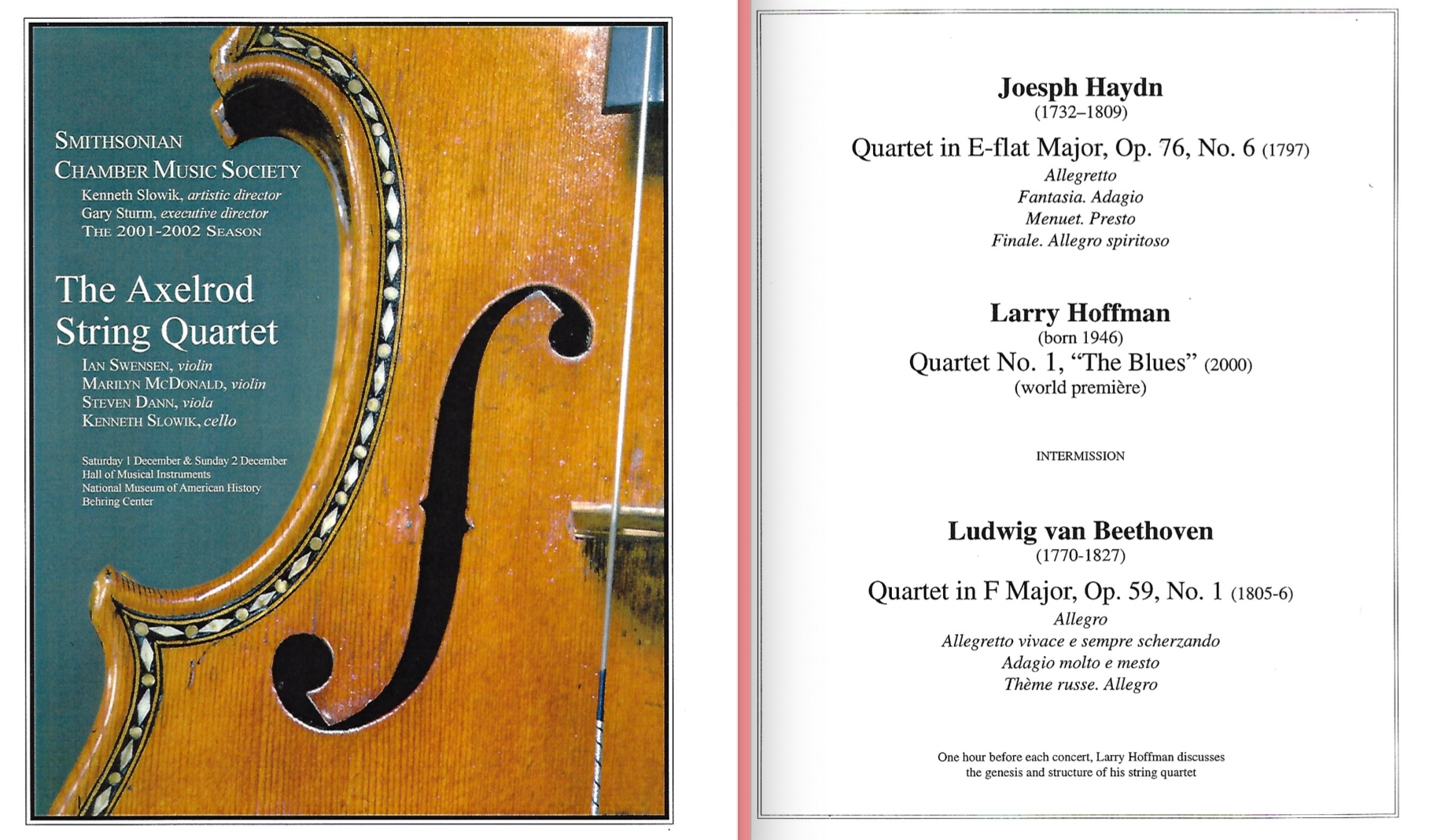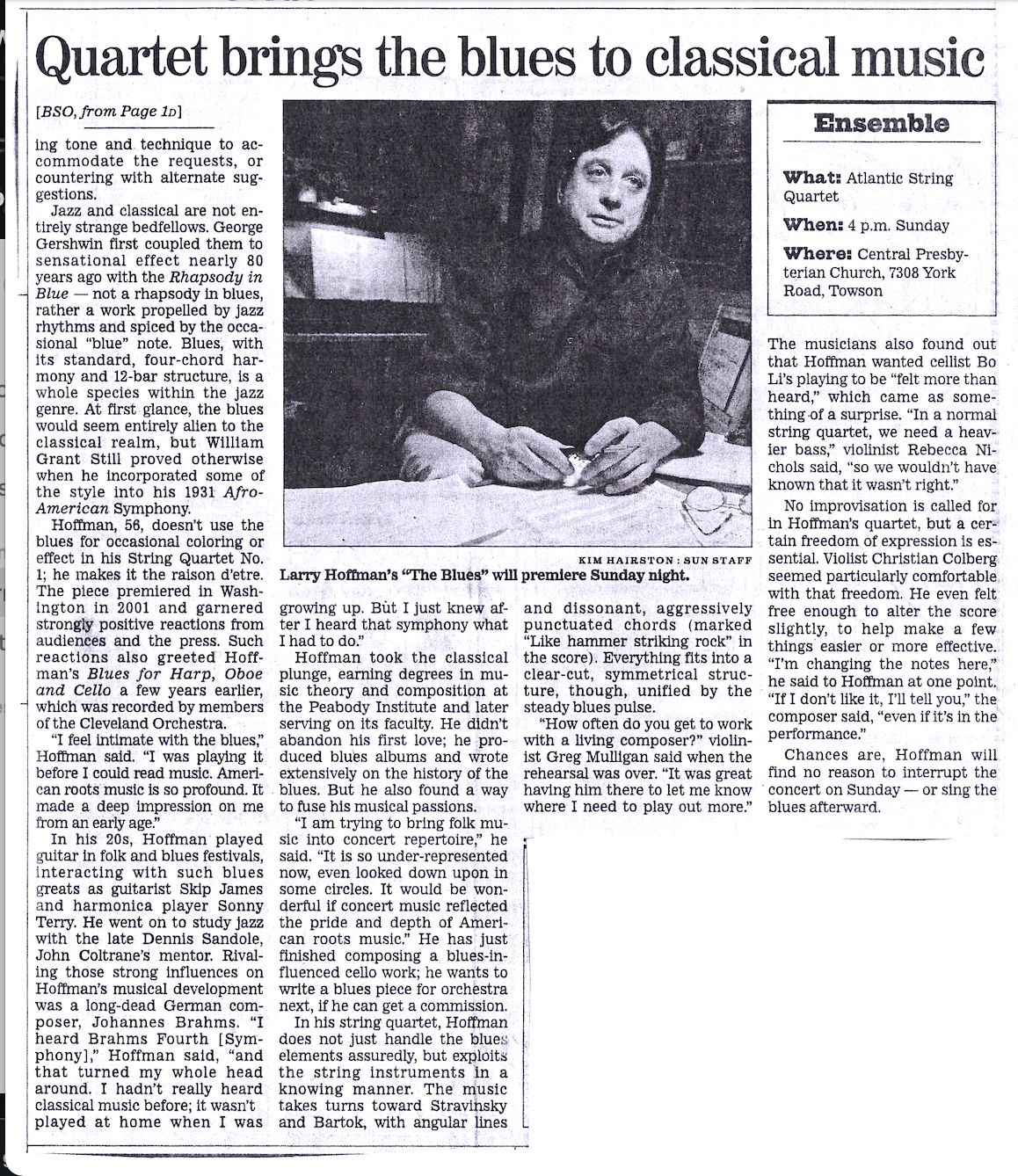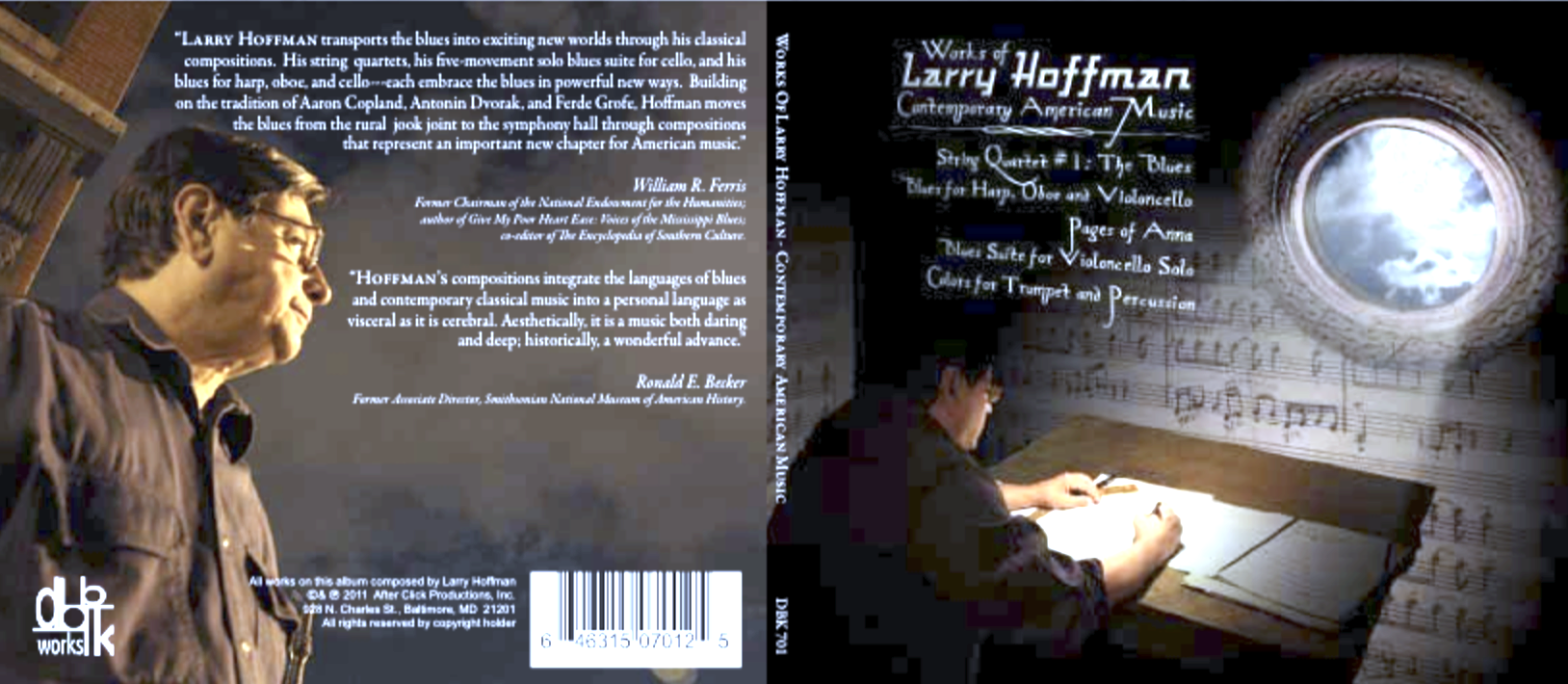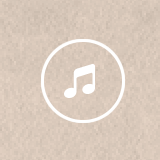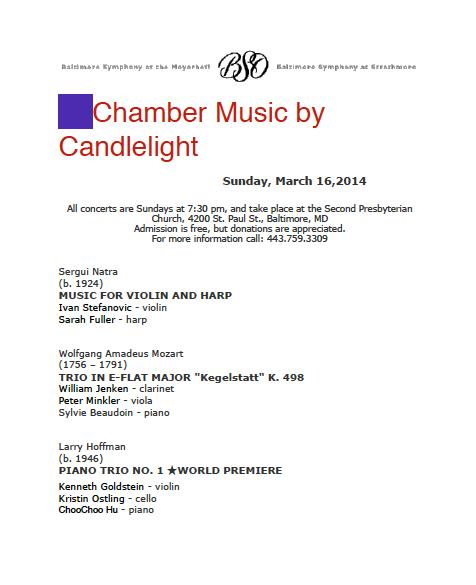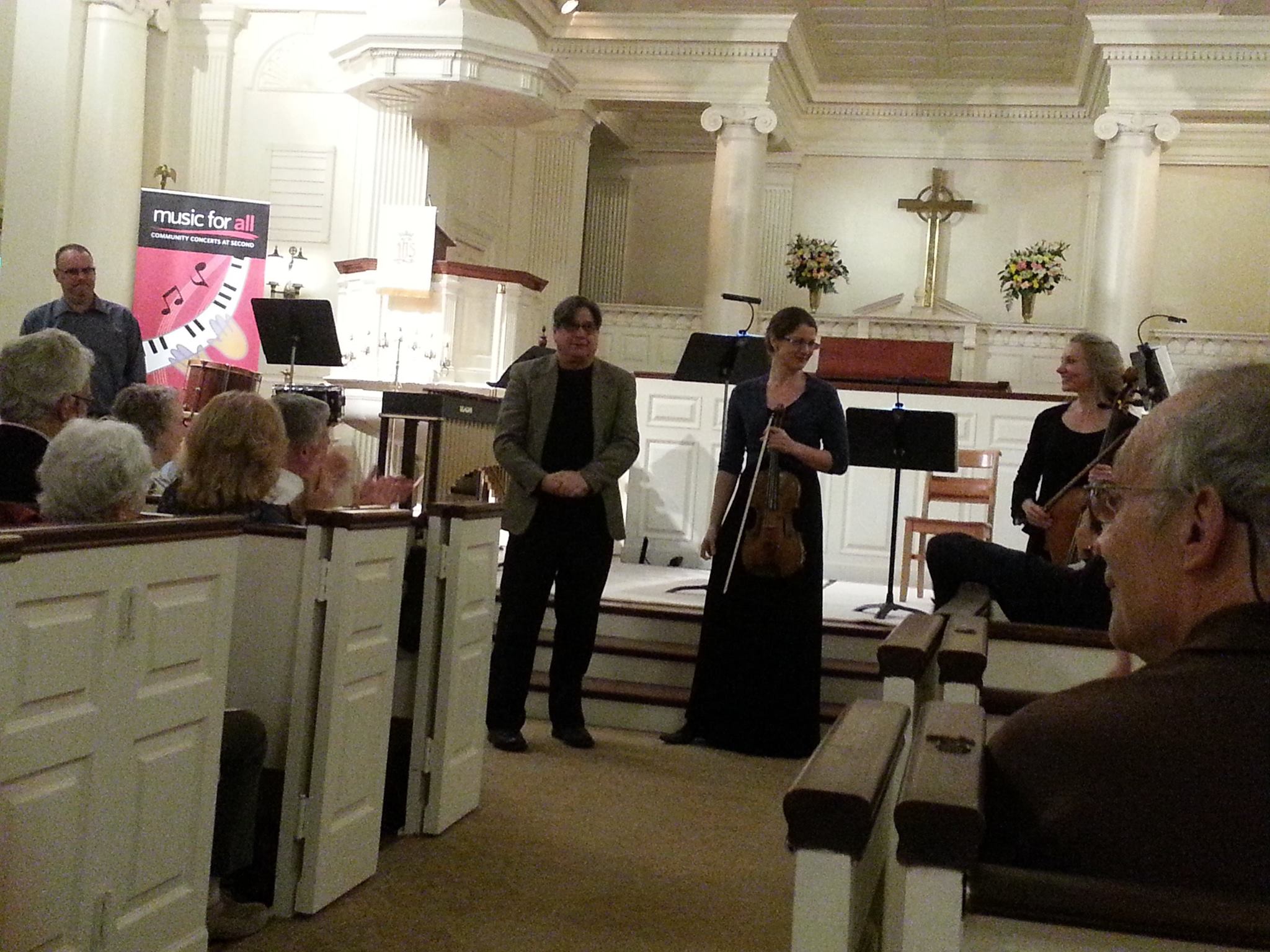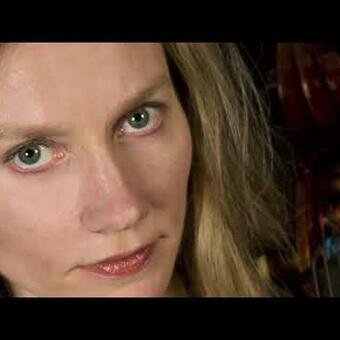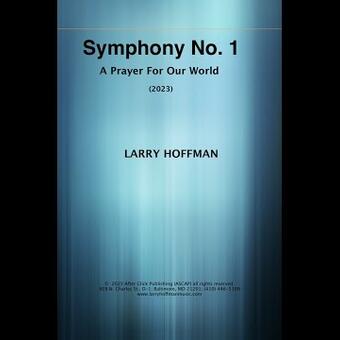About Larry

Grammy-nominee Larry Hoffman is an award-winning composer whose works have been performed throughout the United States and in Europe. While earning his Bachelor’s and Master’s degrees in theory and composition from the Peabody Conservatory, he received grants from the Fromm Music Foundation at Harvard and the American Music Center. Upon graduation, Larry was the recipient of Peabody’s Gustav Klemm Award… more
String Quartet #1: The Blues ; lecture/ performance
This is my most-performed work. At least five string quartets have performed it both here in the USA and abroad. It had its premiere as part of the Smithsonian Institution Chamber Music Series, the fine Axelrod String Quartet receiving standing ovations at the conclusion of both performances that weekend. It has been peformed in Sweden multiple times, and featured on local television in Baltimore. The present performance was part of a program held at Harold Washington Library in Chicago during the same weekend that my "Three Songs for Bluesman and Orchestra" -- a work commissioned by the Chicago Sinfonietta--was premiered at Dominican College and repeated the next evening at Symphony Center, home of the Chicago Symphony.
"Speaking of The Blues," a program held at Chicago's Harold Washington Library on May 9, 2008, featured composer Larry Hoffman and his work, "String Quartet #1: The Blues," as performed by the New Millennium Orchestra String Quartet : Elizabeth Choi, first violin; Blagomira Lipari, second violin; Dominic Johnson (leader), viola; and Eric Schaeffer, violoncello.
I was interviewed by--and discussed various aspects of the blues with host Barry Dolins, series founder, blues aficionado, and Chicago's Deputy Director at the Mayor's Office Of Special Events.
This video is presented courtesy of the Music Division of the Chicago Public Library: Christopher Popa, Executive Producer of video; and Director, Music Information Center, Chicago Public Library.
Digital / audio transfer by Ed Tetreault, manager of The Peabody Conservatory Department of Recording Arts & Sciences.
Music Division Of The Chicago Public Library
Composer / Speaker: Larry Hoffman
Host / Speaker: Barry Dolins
Musicians: New Millennium Orchestra String Quartet
Violin I: Elizabeth Choi
Violin 2: Blagomira Lipari
Viola (leader): Dominic Johnson
Violoncello: Eric Schaeffer
Music Information Director: Christopher Popa
Digital Transfer: Ed Tetreault
Eighteen Hammers by Johhny Lee Moore ©Atlantic/Rhino runs over beginning credits.
-
String Quartet No 1. The Blues Larry HoffmanThis is the work that marked my return to composition after a long absence during which I became a blues journalist and record producer. It was a wonderful leap into a music that had meant so much to me earlier in my life. I traveled the country, hearing and meeting bluesmen and women, writing about them, and sometimes discovering them, helping them jump-start a career. Along the way I garnered a Grammy nomination, and awards for producing and writing about the blues internationally. I was talked back into composing by three very close friends who reminded me of what they felt was my "greater purpose." It hit a nerve, and after a while I decided to write a string quartet, which I always felt to be a badge of authenticity for a real composer. My deal with myself was : if it failed, I would continue on my blues path. If it succeeded I would trudge on, trying to create blues -inspired works that would bring a new dimension and respect to that wonderful music.
-
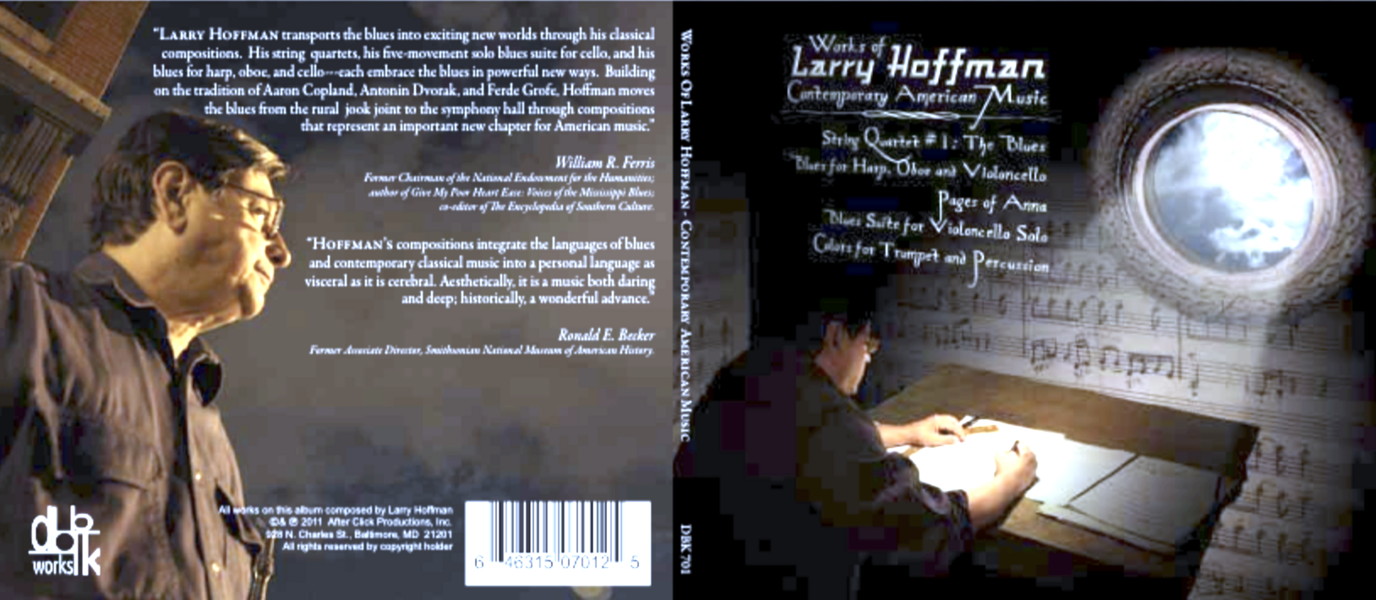 Works of Larry HoffmanString Quartet No.1 can also be heard on my CD "Works of Larry Hoffman" as performed by the fine Atlantic String Quartet (of the Baltimore Symphony Orchestra). They have performed the work often, and do a fine job on this recording. In fact, this ensemble was the very first to have played this work!
Works of Larry HoffmanString Quartet No.1 can also be heard on my CD "Works of Larry Hoffman" as performed by the fine Atlantic String Quartet (of the Baltimore Symphony Orchestra). They have performed the work often, and do a fine job on this recording. In fact, this ensemble was the very first to have played this work! -
 String Quartet No.1 World Premiere .jpgMy first string quartet was premiered by the Axelrod Quartet as part of the Smithsonian Chamber Music Series. It received a standing ovation both nights! What a treat... Thank you, Axelrod Quartet!
String Quartet No.1 World Premiere .jpgMy first string quartet was premiered by the Axelrod Quartet as part of the Smithsonian Chamber Music Series. It received a standing ovation both nights! What a treat... Thank you, Axelrod Quartet! -
 Weber Quartet Stockholm, Sweden.pngThe Weber String Quartet heard about the piece and performed it in Stockholm a number of times.
Weber Quartet Stockholm, Sweden.pngThe Weber String Quartet heard about the piece and performed it in Stockholm a number of times. -
 String Quartet No.1: CHICAGO.pngString Quartet No. 1 was performed as part of Chicago's "Classical Monday" series. The group was put together by violist Dominic Johnson, and included Jeff Yang, violin1; Matt Albert, violin 2; and Nicholas Photinos, cello. Thanks to Matt and Nicholas of "Eighth Blackbird".
String Quartet No.1: CHICAGO.pngString Quartet No. 1 was performed as part of Chicago's "Classical Monday" series. The group was put together by violist Dominic Johnson, and included Jeff Yang, violin1; Matt Albert, violin 2; and Nicholas Photinos, cello. Thanks to Matt and Nicholas of "Eighth Blackbird". -
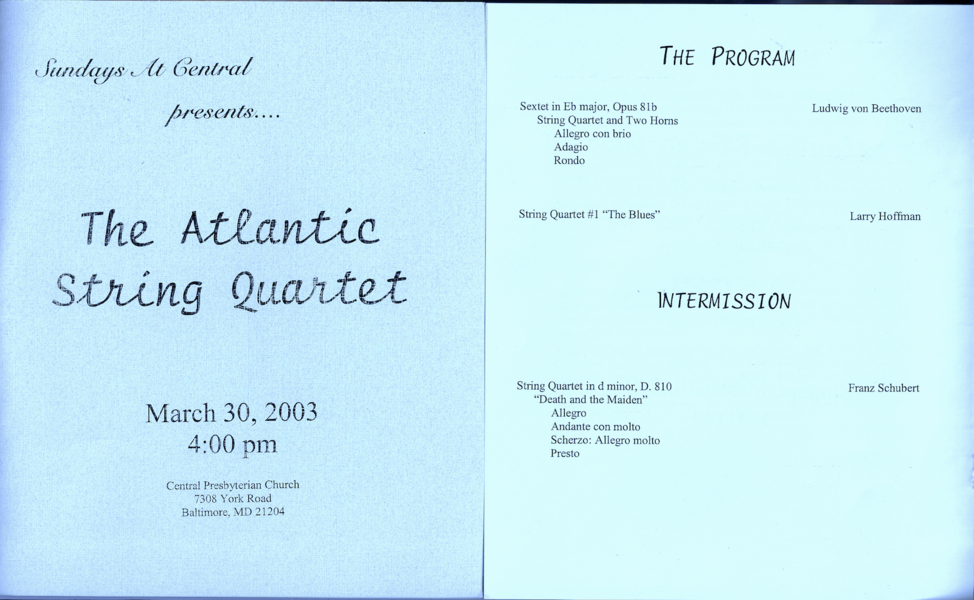 String Quartet No. 1 : The Atlantic String Quartet.pngThis was the Baltimore premiere of "String Quartet No.1: The Blues" featuring the Atlantic String Quartet, made up of artists from the Baltimore Symphony. It got some press in the Baltimore Sun, and there was sure to be a crowd as it is my hometown, and I had been teaching and playing there for years, so I kind of expected it. I will never forget this day. It was the last day of March, and it snowed like crazy! A wild snowstorm and the hall was packed! This is the quartet who recorded the piece on my CD.
String Quartet No. 1 : The Atlantic String Quartet.pngThis was the Baltimore premiere of "String Quartet No.1: The Blues" featuring the Atlantic String Quartet, made up of artists from the Baltimore Symphony. It got some press in the Baltimore Sun, and there was sure to be a crowd as it is my hometown, and I had been teaching and playing there for years, so I kind of expected it. I will never forget this day. It was the last day of March, and it snowed like crazy! A wild snowstorm and the hall was packed! This is the quartet who recorded the piece on my CD. -
String Quartet #1: The Blues / Atlantic String QuartetThe Baltimore premiere of String Quartet No.1: The Blues was performed by the Atlantic String Quartet. It is this performance that is found on my CD "Works of Larry Hoffman: Contemporary American Music."
-
 STRING QUARTET NO 1 Sun.pngThe Baltimore Sun covered the Baltimore premiere of my "String Quartet No.1"
STRING QUARTET NO 1 Sun.pngThe Baltimore Sun covered the Baltimore premiere of my "String Quartet No.1"
Woodwind Quintet #3: Old-Time Music
-
Woodwind Quintet #3: Old - Time MusicThis is my homage to Old-Time or Old-Timey music, the genre of country music that preceded and informed bluegrass. It had its day in the 1920s and 30's and is said to be the oldest form of indigenous American folk music, with the exception of Native American music. I spent many hours as a teenager playing this music with friends--and believe it should be represented in the repertoire of American serious concert music. Both movements reflect the American folk dances that evolved simultaneously with this genre of music.
Blue Mirror for Solo Guitar (2016)
The nuances of the blues are incredibly and wonderfuly complex and expressive, both from a rhythmic as well as a melodic aspect. Microtones of all stripes abound, shaded by glissandi both subtle and gross, while the rhythms -- sometimes erratic-- chug on. The harmonic patterns, usually stretching no further than the tonic-subdominant-dominant orbit, are somehow made fresh, as are the blues scales (primarily pentatonic) by their bent and shaken and sliding notes. Much of this is due to the highly personalized languages of the blues, remade anew by each of the authentic, creative artists who shaped and reshaped this great music over the decades.
The blues sections of this work are drawn from my original blues music, laced with -- and sometimes based on-- the authentic underpinnings of the traditional music.
There is no improvisation whatever! Each nuance is carefully notated. I had to invent certain techniques to bring about the "non-western" elements. But if followed carefully, the score will produce the authentic sound that is present in this performance.
-
Blue Mirror / for Solo GuitarThis is my first work for guitar. It is another synthesis of my atonal voice, and original blues. It is ironic perhaps that I have been playing guitar for over fifty years and—besides some early blues instrumentals written and notated clumsily before I could read music, and some songs for which the guitar was mostly accompaniment -- I never really composed for the guitar. I am beginning to come to terms with my instrument in an entirely new way. I feel like I am finally beginning to listen to my guitar of fifty years, understanding how she thinks, and discovering her in entirely new ways— exciting. After playing clubs for nearly ten years, I remained an inveterate improvisor and composer... my ideas came by ear and by mystery ... And so, when it finally came down to notating the personal blues style that I had cultivated for guitar over many years, I was at a loss. My earliest attempt at a score was more a cry for help!
-
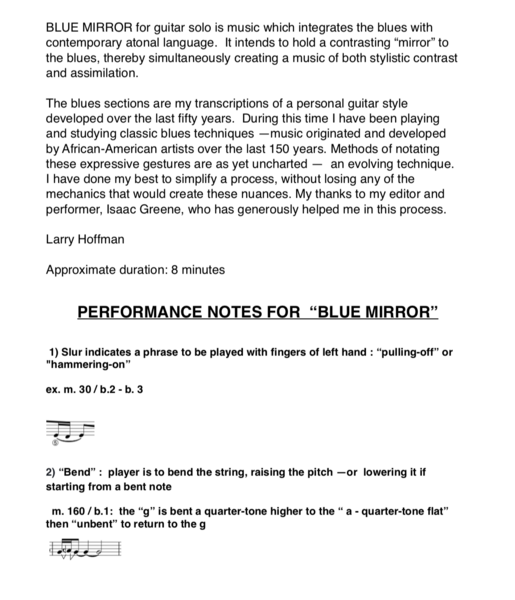 "Blue Mirror" performance notes p.1This is page one of the detailed performance notes
"Blue Mirror" performance notes p.1This is page one of the detailed performance notes -
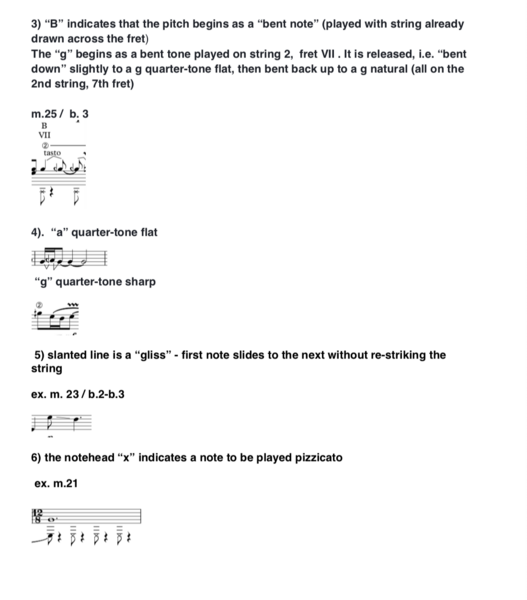 "Blue Mirror" performance notes, page 2performance notes page 2
"Blue Mirror" performance notes, page 2performance notes page 2 -
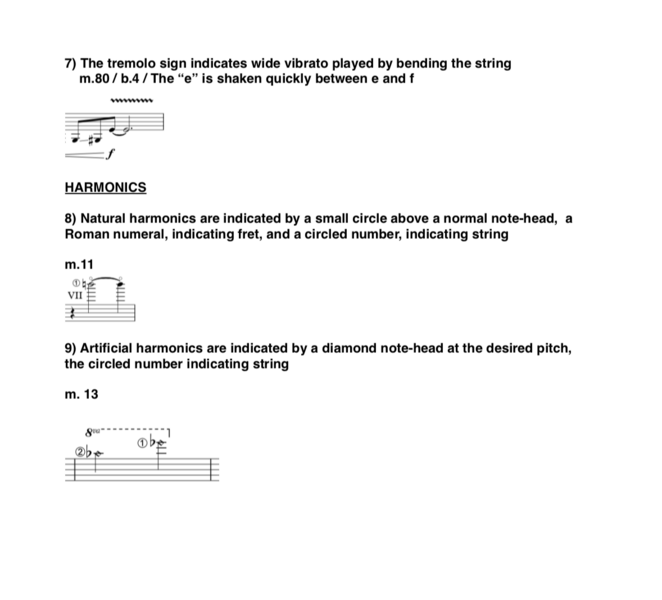 "Blue Mirror" performance notes , p.3performance notes / page 3
"Blue Mirror" performance notes , p.3performance notes / page 3 -
Blues Suite for Violoncello Solo / Kristin OstlingConceived in five movements, this blues-inspired piece is a homage to J.S.Bach and his immortal cello suites -- ever an inspiration.
Pages of Anna
String Quartet No.2
In String Quartet No. 2 I extended my concept, employing four different keys -- sequentially -- each joined to the other in turn, until all were spun together as a fugue standing as the work's climax. The Dover Quartet, who recorded this work as The Old City Quartet, also premiered this piece in concert. The Dover ensemble is simply wonderful; and, at the time of the recording, was the finest string quartet at the renowned Curtis Institute of Music -- and the first string quartet in residence there.
Among their many prizes and awards are as follows: three Special Prizes at the 2013 Banff International String Quartet Competition, the highly prestigious Cleveland Quartet Award, Lincoln Center's Hunt Family Award, the grand prize at the Fischoff Competition, and special prizes at the Wigmore Hall International String Quartet Competition. Their recording of this work can be found on the recorded compilation: "Mozart & The Contemporaries ," 2011 (CRS CD1191) ©2011 CRS Artists
https://www.discogs.com/The-Old-City-String-Quartet-John-Russo-Mozart-The-Contemporary/release/8666307
-
String Quartet #2 Dover Quartet
-
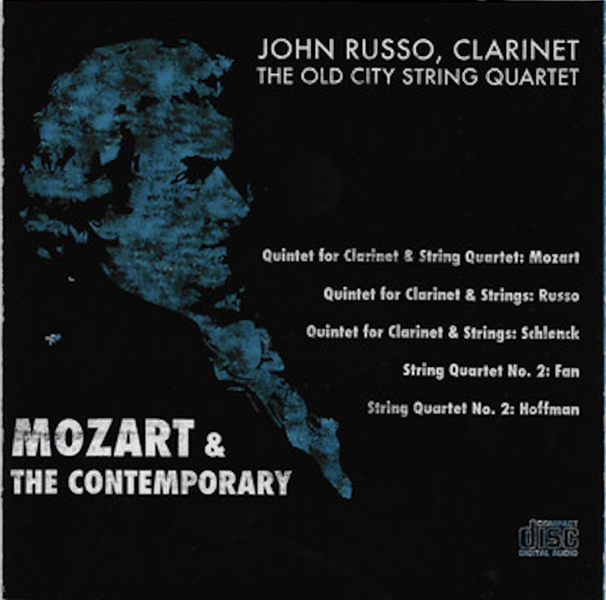 "String Quartet No.2" by the Dover Quartet can be found on "Mozart & The Contemorary" CRS Records
"String Quartet No.2" by the Dover Quartet can be found on "Mozart & The Contemorary" CRS Records -
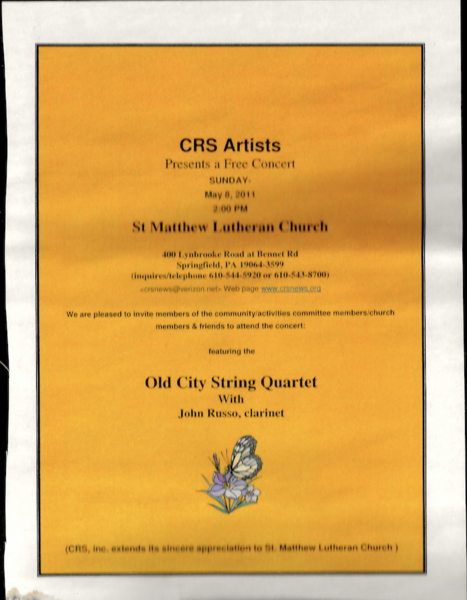 Dover Quartet Premiere of "String Quartet No.2"I had not yet heard of this quartet (then famous at their Philadelphia alma mater, the Curtis Institute of Music), but I was glad to hear that clarinetist John Russo, CEO of CRS Records, had engaged an excellent quartet to record my piece. They were then known as "The Old City Quartet." We had a few telephone conversations regarding the piece; and, when I said,"You know the work is polyphonic, written in four keys!" My friend Milena, the mega-talented violist of the ensemble, responded: "We knew that!" And at that point I realized I was on board with some very special musicians. I regret to this day that I did not make the trip to Philadelphia to rehearse and work with them on the piece. It was on a teaching day; and I never miss them. My presence could not have improved their performance, however. They were amazing, and it is a day I will never forget. A small crowd huddled in a church outside of Philadelphia on that Sunday afternoon, anticipating the live program of a soon-to-be-released CD. The quartet was slightly late, and Milena called me to say they were on the way. When they arrived I showed them in, and offered them a room where they could relax after the drive, tune, and warm up. Hurrying with me into the hall, Milena said, "That's okay, we're good." And they immediately, soundlessly, took the stage, unpacked their instruments, and proceeded to flawlessly perform two premieres of contemporary works and Mozart's clarinet quintet, featuring the aforementioned John Russo at the helm -- without a break! The group's consummate attention to detail; their innate talent and ensemble rapport stunned me.. for lack of a better word. All the hard work over months bringing the work to life, all the countless hours were now repaid in full; and I will always be grateful for their work and that day!
Dover Quartet Premiere of "String Quartet No.2"I had not yet heard of this quartet (then famous at their Philadelphia alma mater, the Curtis Institute of Music), but I was glad to hear that clarinetist John Russo, CEO of CRS Records, had engaged an excellent quartet to record my piece. They were then known as "The Old City Quartet." We had a few telephone conversations regarding the piece; and, when I said,"You know the work is polyphonic, written in four keys!" My friend Milena, the mega-talented violist of the ensemble, responded: "We knew that!" And at that point I realized I was on board with some very special musicians. I regret to this day that I did not make the trip to Philadelphia to rehearse and work with them on the piece. It was on a teaching day; and I never miss them. My presence could not have improved their performance, however. They were amazing, and it is a day I will never forget. A small crowd huddled in a church outside of Philadelphia on that Sunday afternoon, anticipating the live program of a soon-to-be-released CD. The quartet was slightly late, and Milena called me to say they were on the way. When they arrived I showed them in, and offered them a room where they could relax after the drive, tune, and warm up. Hurrying with me into the hall, Milena said, "That's okay, we're good." And they immediately, soundlessly, took the stage, unpacked their instruments, and proceeded to flawlessly perform two premieres of contemporary works and Mozart's clarinet quintet, featuring the aforementioned John Russo at the helm -- without a break! The group's consummate attention to detail; their innate talent and ensemble rapport stunned me.. for lack of a better word. All the hard work over months bringing the work to life, all the countless hours were now repaid in full; and I will always be grateful for their work and that day! -
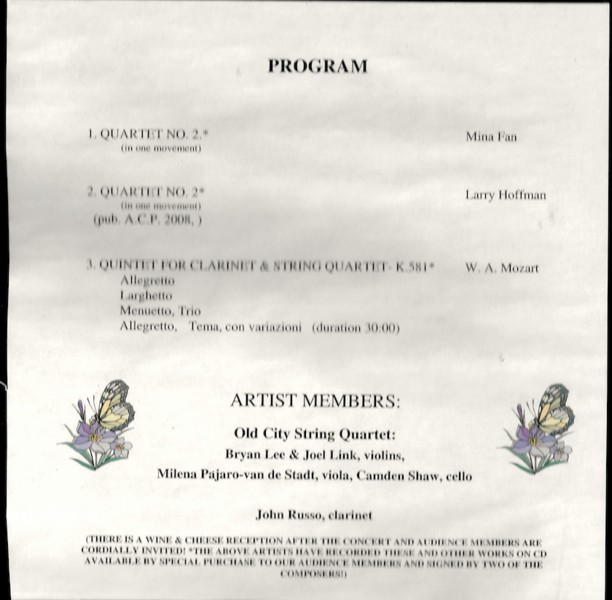 Program: premiere of String Quartet No.2 / Dover Quartet
Program: premiere of String Quartet No.2 / Dover Quartet -
String Quartet No. 7 : SIMPLY BLUETIFULIn this quartet I tried to unite a blues ambience with an obvious romantic touch, one akin to a jazz ballad, or a sweeping nocturne. I extended harmonies in a traditional way, but one never found in blues.
Blues for Harp, Oboe, and Violoncello
Blues For Harp, Oboe, and Violoncello (1986) was my first effort to create a blues-inspired work that could distill and express blues essence via classical instrumentation and contemporary compositional technique. The mission to put blues on the serious concert music stage was the primary force leading me to composition; I was hoping that this "experiment" would be successful.
The performance presented here (and on my CD) is the result of three extraordinary talents.
Thanks to CRS Records, my piece fell into the accomplished hands of cellist Bryan Dumm, Yolanda Kondonassis, and oboist John Mack. Mr. Dumm is a well-regarded veteran of the acclaimed Cleveland Orchestra. Ms. Kondonassis is a world-renown harpist who made her debut with the New York Philharmonic at age eighteen. She is celebrated as one of the world's premiere and most recorded solo harpists; John Mack was hailed by the New York Times as "the dean of American oboists," regarded as among the top two or three in the world.
“I should have had holes put in my shoes to create a more authentic performance," legendary oboist John Mack quipped to me before the Cleveland premiere.
Needless to say, I was honored to include the artistry of these three stellar musicians on my CD.
I am proud to say that Blues For Harp, Oboe, and Violoncello has proven to be my most- performed piece; one that has gotten the attention of fine musicians from around the USA and Europe. The world premiere was performed by Pittsburgh
Orchestra musicians (who performed the work in PA twice). It was played then in Cleveland, OH ; Washington, D.C.; Stockholm, Sweden; Jackson, MS; and, last I heard, at the Breckenridge Music Festival in Breckenridge, Colorado. I suspect that it was performed in other cities as well -- at least the musicians other cities have acquired score and parts from me with that intention!
-
Blues for Harp, Oboe, and Violoncello (1986)
"Blues for Harp, Oboe, and Violoncello" was my first attempt at infusing a contemporary classical work with blues essence. Putting the blues on the American serious concert music stage was a primary mission that originally drove me to composition. The performers who recorded this work were each stellar and well-known to serious listeners of classical music. Oboist John Mack was dubbed by the New York Times "the dean of American oboists," harpist Yolanda Kondonassis the elegant winner of countless international awards, debuting at age 18 as a soloist with the New York Philharmonic, and cellist Bryan Dumm, a highly respected cellist of the Cleveland Orchestra honored me with both this recording and a special live performance in Cleveland,Ohio. This performance can be found on my CD, "Works of Larry Hoffman / Contemporary American Music.
-
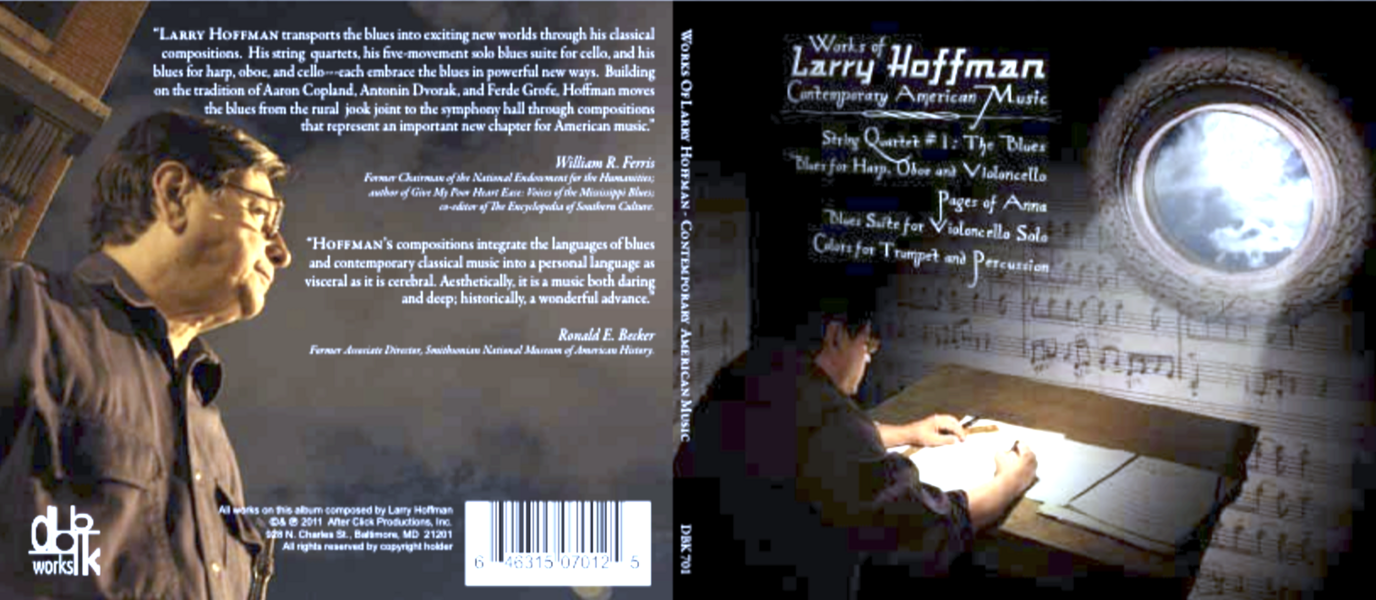 cd cover.png"Blues for Harp, Oboe, and Violoncello" can be found on my CD: "Works of Larry Hoffman: Contemporary American Music" (DBK 701)
cd cover.png"Blues for Harp, Oboe, and Violoncello" can be found on my CD: "Works of Larry Hoffman: Contemporary American Music" (DBK 701) -
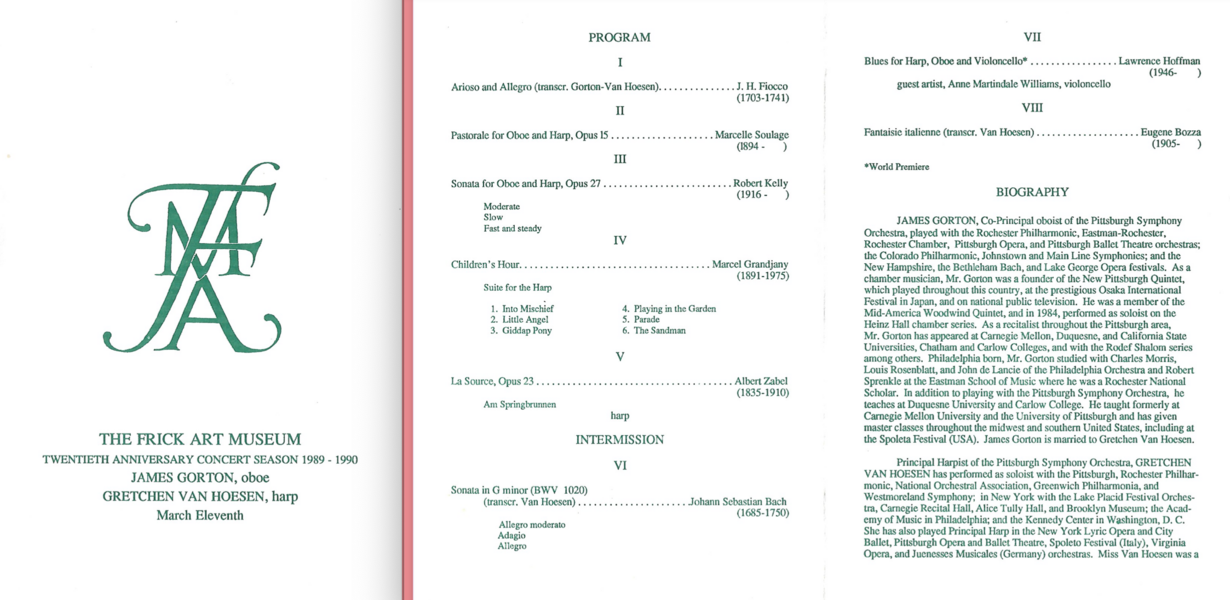 The World Premiere ! Pittsburgh, PA
The World Premiere ! Pittsburgh, PA -
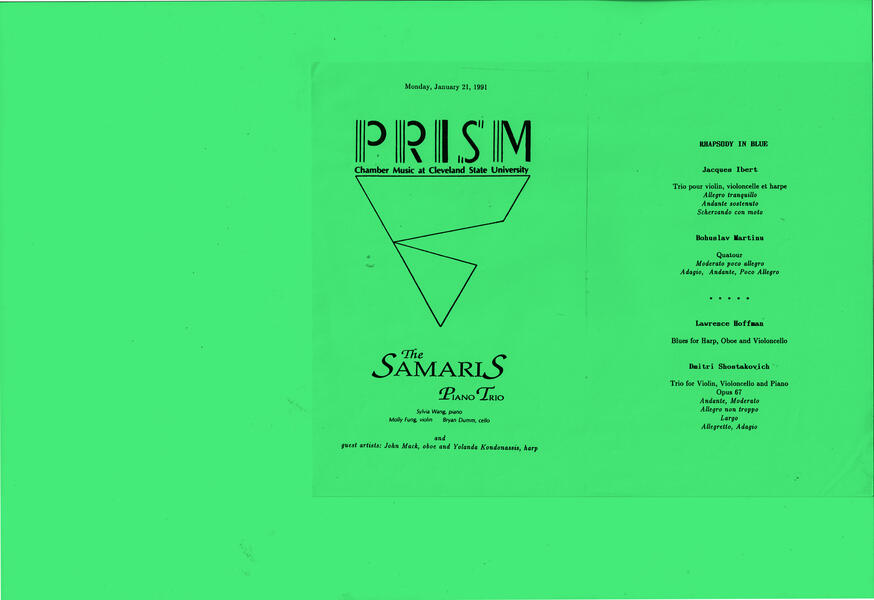 The Cleveland performance.jpgThis is the recording of "Blues For Harp, Oboe, and Violoncello" on "Works of Larry Hoffman: Contemporary American Music,"DBK Records,-- performed by John Mack, Yolanda Kondonassis, and Bryan Dumm
The Cleveland performance.jpgThis is the recording of "Blues For Harp, Oboe, and Violoncello" on "Works of Larry Hoffman: Contemporary American Music,"DBK Records,-- performed by John Mack, Yolanda Kondonassis, and Bryan Dumm -
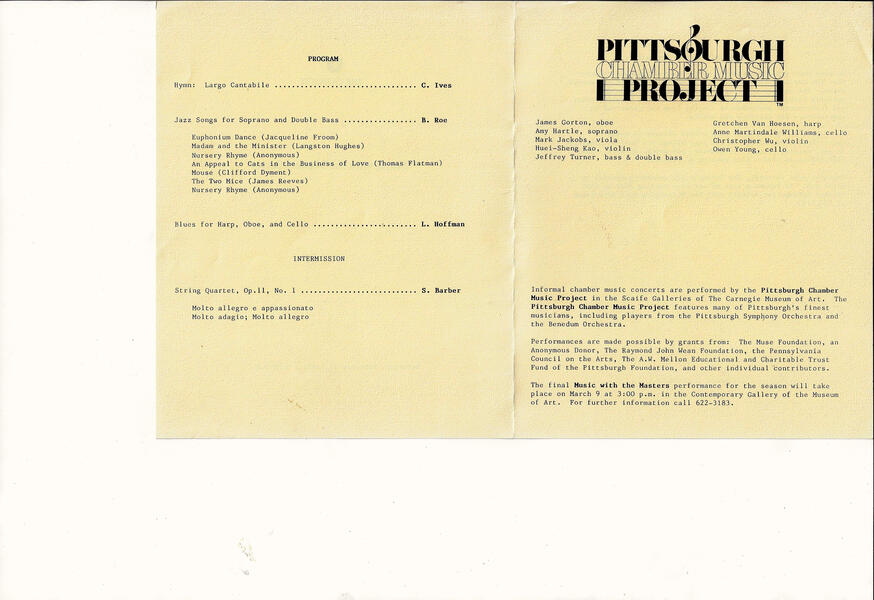 The second Pittsburgh performance
The second Pittsburgh performance -
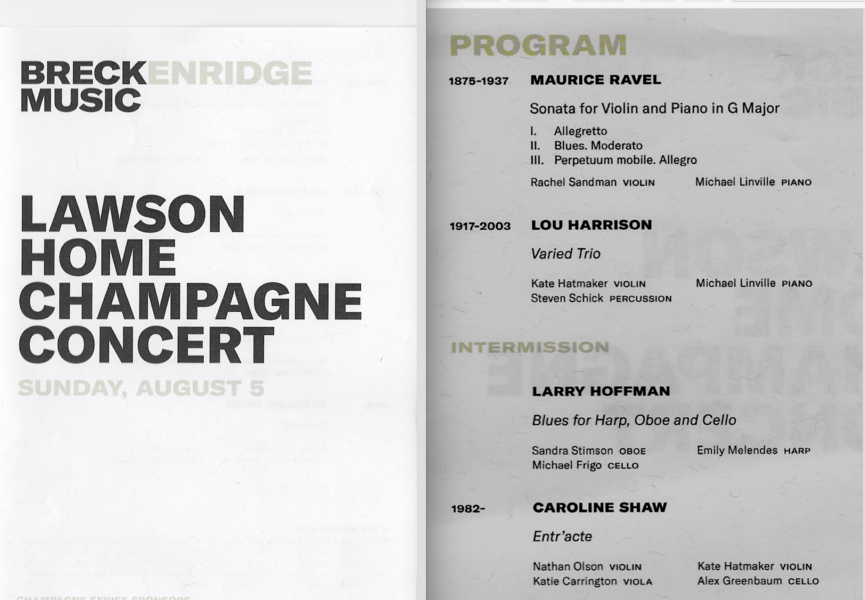 The Breckenridge Music Festival performance
The Breckenridge Music Festival performance
Three Moods for Oboe and Piano
-
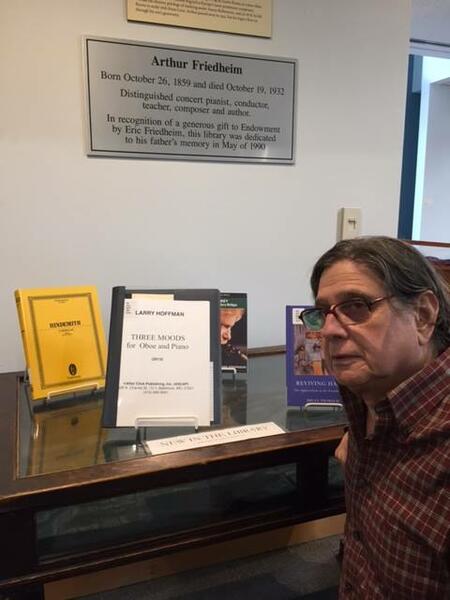 Three Moods For Oboe and Piano.jpg"Three Moods for Oboe and Piano" was selected in 2016 as a featured "new score" in the Peabody Conservatory Library.
Three Moods For Oboe and Piano.jpg"Three Moods for Oboe and Piano" was selected in 2016 as a featured "new score" in the Peabody Conservatory Library. -
Three Moods for Oboe and Piano (2013) / Larry HoffmanThis is a three-movement work for Oboe and Piano; The score is currently on display in the "new in the library" showcase of the Friedheim Library of the Peabody Conservatory; Johns Hopkins University
Piano Trio #1 (2013)
http://www.communityconcertsatsecond.org/mod/community_concerts/print/103/index.php
-
Piano Trio #1This work was completed in 2013 and had its World Premiere the next year as part of the Baltimore Symphony's Candlelight Chamber Music Series." It began as a musical entry in my journal and developed into a fully formed piece beautifully performed by Kenneth Goldstein, violin; Choo Choo Hu, piano; and Kristin Ostling, cello. It has special meaning for me, as it was "chosen" months before as the favorite new work of mine by my late dear friend and mentor Lynn Taylor Hebden of the Peabody Conservatory of the Johns Hopkins University. The performance of it was dedicated to her.
-
 Piano Trio No.1 World Premiere
Piano Trio No.1 World Premiere
American Summersounds (2014)
“American Summersounds,” scored for two percussionists , viola, and violoncello, is a piece I composed for the 2015 Baltimore Symphony Orchestra's "Candlelight Chamber Music Series.” It began quite by accident while watching baseball games over the 2014 season. Thanks to the media’s wide compass over virtually all division teams in both leagues, it is possible to “visit” stadiums all over the country. While watching, it occurred to me that I was listening intently as well to the sounds of the game, which often differed from stadium to stadium.
My good friend and percussionist of the Baltimore Symphony, John Locke, visited me one afternoon and heard me experimenting with some motifs used in the various stadiums. He asked me to work the ideas into a piece so that he could perform it! I hadn't really thought of making them into a "finished piece," but I soldiered on :) . It became more and more interesting and challenging as the days went on.
I created a simple veneer of the baseball motifs, incorporating them with a layered, energized counterpoint among the two percussionists, viola, and cello. The complexity is understated, but I feel motors the work along.
Baseball, America’s summer game, indeed has its own music.
The performers that evening were John Locke and Willam Maloy, percussion; Rebekah Newman, viola ; and Kristin Ostling, cello.
http://www.communityconcertsatsecond.org/mod/community_concerts/print/114/index.php
-
 american summermusic144_o.jpgThis photo was shot after the world premiere of "American Summersounds," at the Baltimore Symphony's "Candlelight Chamber Music" series.
american summermusic144_o.jpgThis photo was shot after the world premiere of "American Summersounds," at the Baltimore Symphony's "Candlelight Chamber Music" series. -
American Summersounds: I. Play Ball II.The 5th III. Bottom of the Ninth“American Summersounds,” was a piece I composed for the 2015 Baltimore Symphony's "Candlelight Chamber Music by Candlelight" series. It began quite by accident. While watching baseball games over the 2014 season--thanks to the media’s wide compass over virtually all division teams in both leagues making it possible to “visit” stadiums all over the country--- it occurred to me that I was listening intently as well, to the sounds of the game, which often differed from stadium to stadium. Baseball, America’s summer game, indeed has its own music. So I began playing around with the motifs I remembered, assigning them to various instruments. While visiting me one morning, my good friend John Locke, Baltimore Symphony percussionist, heard the ideas and immediately said, "I love it. Finish the piece and I'll play it!" Working on the piece became more and more fun, and when it was finished, it received a fine World Premiere as part of the Symphony's Candlelight series.


